Introduction
Pallet jacks, also known as pallet trucks or pump trucks, play a crucial role in warehouses and industrial environments. These versatile tools, whether operated manually or powered electrically, are designed to lift and move pallets with ease, facilitating the smooth flow of goods within a facility. While automation technologies like pallet cranes offer enhanced productivity, pallet jacks remain a cost-effective and flexible solution for handling materials, especially for small businesses and entrepreneurs.
In this article, we will explore the benefits of renting pallet jacks, including cost-effectiveness, flexibility, access to the latest models, maintenance and repair services, and optimized storage space. We will also discuss important factors to consider when choosing the right pallet jack rental, such as load capacity, fork length and width, and whether to opt for an electric or manual model. Additionally, we will highlight the significance of understanding rental terms and conditions, as well as the importance of selecting a reputable rental company with positive customer reviews and a solid reputation in the industry.
By the end of this article, you will have a comprehensive understanding of the advantages of renting pallet jacks and how to make an informed decision for your warehouse operations.
What is a Pallet Jack?
A lifting device, commonly known as a truck or pump truck, is a versatile piece of equipment found in the busy aisles of storage facilities and industrial environments. Whether operated manually or powered electrically, this tool is skilled at lifting and shifting platforms to their desired destinations. Using a straightforward but efficient system consisting of a collection of forks that securely slide under large platforms, goods-lifting devices raise substantial items effortlessly, making it easier to move them across storage areas. Taking into account the significant investments in warehouse automation, like the example of Europris in Norway, which combined six storage facilities into a single automated logistics center with 65,000 locations for pallets, the modest pallet lifter remains an essential resource. Automated systems, including cranes, enhance productivity and meet customer demands more efficiently. Nevertheless, material handling equipment offers an economical and adaptable alternative for managing goods when complete automation is impractical or still being implemented. As industry research shows, automation investments can lead to significant cost savings, productivity boosts, and better customer satisfaction. However, for numerous small enterprises and innovators, the flexibility and cost-effectiveness of material handling equipment make them an essential instrument in logistics, facilitating the seamless movement of products from storage to transportation.
Benefits of Renting a Pallet Jack
Choosing jack rentals can be a strategic move for storage operations, echoing the successes of retail giants and logistics leaders. Europris, a prominent discount chain in Norway, began an automation journey that resulted in consolidating six storage facilities into one automated logistics center. This center, with its 65,000 storage locations and 11 Vectura cranes, exemplifies the efficiency that can be achieved through thoughtful application of technology and equipment.
Similarly, Amazon's network of over 200 fulfillment centers demonstrates the effectiveness of having the right tools at the right location. Their model, which is being replicated by companies like Target, has set a new standard in fast, efficient delivery and storage operations. This strategy highlights the possible benefits of leasing lifting devices and other machinery to enhance operational flexibility and fulfill customer expectations promptly.
In line with creating the ideal job description for package handlers, the skills needed for operating such equipment, including proficiency with technology and the ability to lift around 50 pounds, are essential for smooth operations. As the strategic placement of storage facilities enables the resolution of logistical obstacles, having the necessary machinery, such as lifting devices, is equally crucial for operational and environmental effectiveness.
Furthermore, as businesses strive to solve problems related to operating costs, storage capacity, and productivity, the principles of selecting the right technology become ever more pertinent. The leasing of lifting devices corresponds to the recommended methods for automating storage facilities, guaranteeing adaptability and expandability while circumventing the disadvantages linked to buying and upkeeping such machinery directly.
In conclusion, leasing a lifting device can offer storage facilities with the flexibility to adjust to evolving requirements, sustain a notable level of efficiency, and ultimately enhance customer satisfaction by ensuring that products are transported effectively and securely within the establishment.
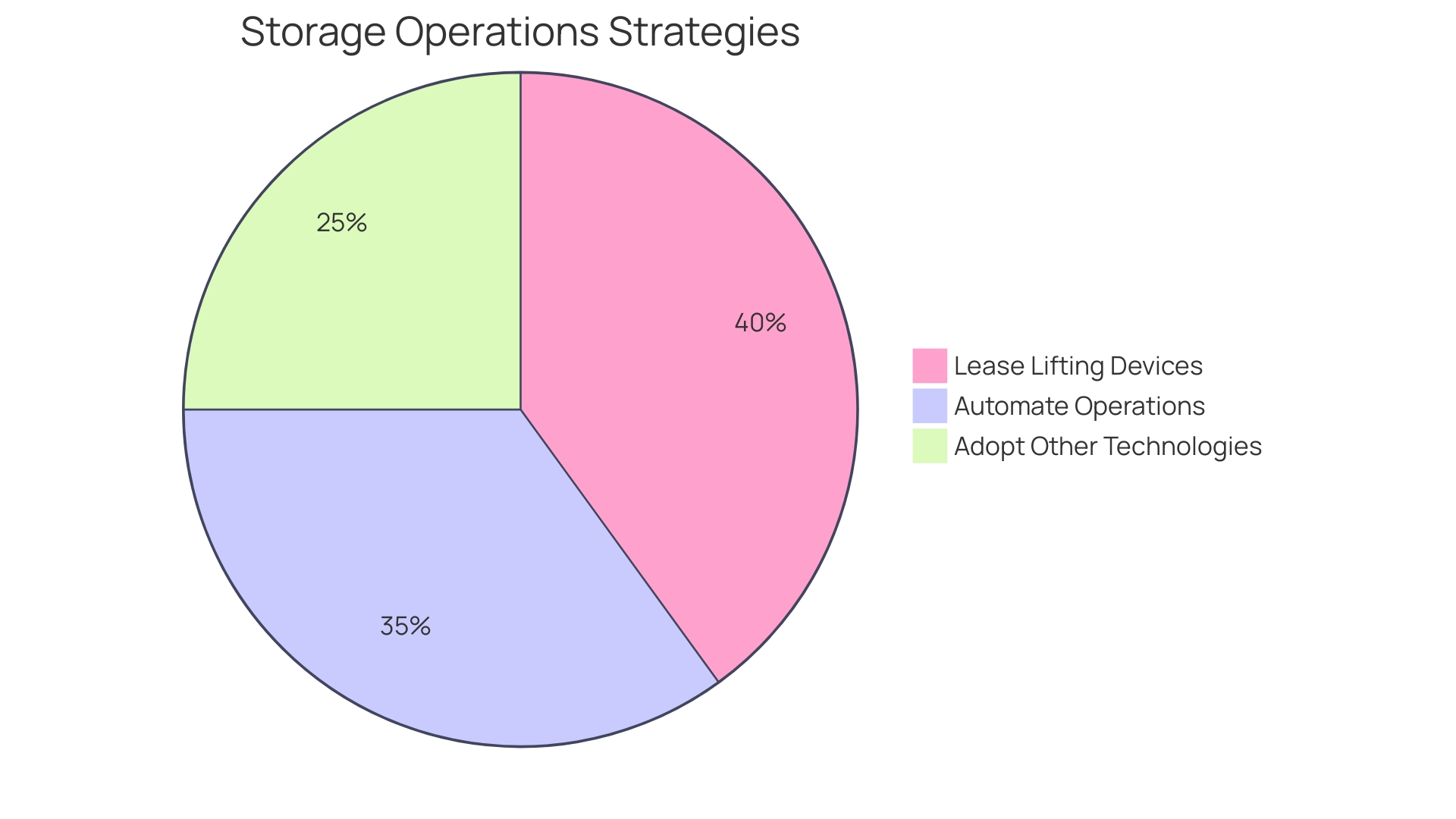
Cost-effectiveness
Choosing to lease a pallet jack instead of buying one outright can be a wise financial choice, especially for facilities that do not require a constant fleet of these tools. This approach frees up capital, allowing businesses to invest in other vital areas, such as enhancing operational efficiency or expanding their inventory. For example, Europris in Norway undertook an ambitious endeavor to centralize their logistics through automation, consolidating six storage facilities into one automated central hub. This move not only streamlined their operations but also exemplified the strategic use of resources to boost overall productivity. Furthermore, as observed in the operations of e-commerce giants such as Amazon and Target, the strategic placement of storage facilities and the effective supervision of logistics can greatly reduce delivery durations and enhance customer contentment. Hence, through the rental of lifting devices, organizations can preserve versatility in their activities, adjusting rapidly to fluctuations in demand or alterations in strategic orientation without the encumbrance of enduring financial obligations to machinery.
Flexibility
When considering the needs of a dynamic distribution center or storage facility, the ability to adapt to changing demands is crucial. Opting to lease jacks serves as a tactical decision, offering the adaptability to choose the appropriate machinery for diverse load capacities and storage requirements. For example, Europris, the foremost discount store in Norway, embraced this flexibility when consolidating their six storage facilities into a single, streamlined automated logistics center. With a group of 11 Vectura cranes for handling goods and 65,000 storage locations, they demonstrated the significance of scalable solutions in contemporary storage management.
Rental options allow businesses to effectively manage their operations by scaling resources in tune with fluctuating workloads. This approach not only meets immediate operational requirements but also aligns with the sustainability ethos of reducing, reusing, and recycling, as noted by industrial influencers at Food Pro. Companies are increasingly exploring reusable systems, such as plastic platforms, to minimize waste and optimize supply chain structures. This shift towards sustainability is gaining momentum despite the challenges posed by the pandemic and ongoing supply chain disruptions.
The significance of selecting the right equipment extends beyond day-to-day functionality, impacting overall business efficiency, workplace safety, and environmental responsibility. As the industry evolves, with a keen focus on sustainability and efficiency, renting jacks for moving goods and other warehouse equipment becomes a solution that not only addresses immediate logistical needs but also contributes to the long-term strategic goals of ensuring a sustainable and adaptable operation.
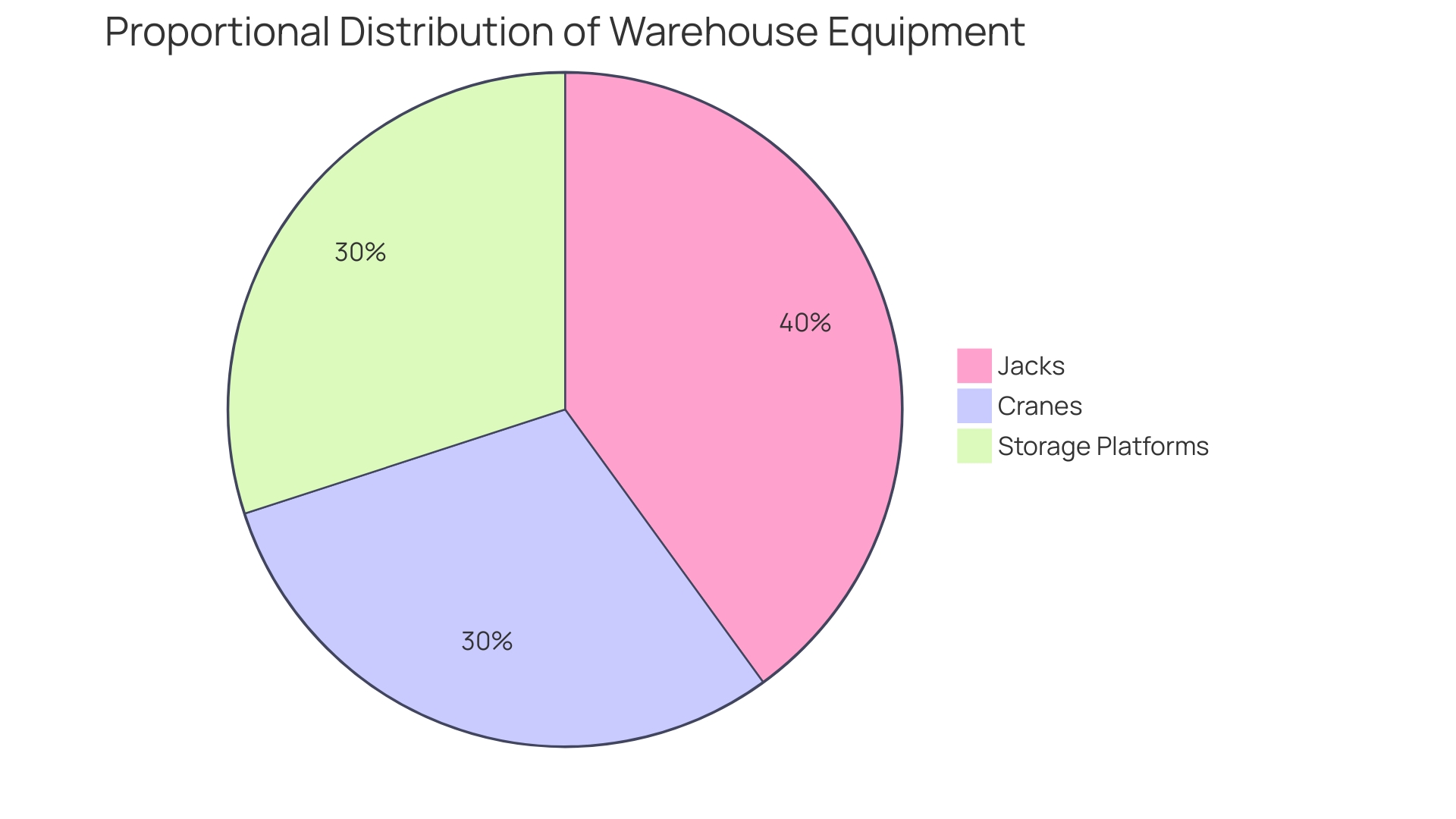
Maintenance and Repairs
Choosing to use a pallet jack lease offers the significant benefit of maintenance and repair services included in the agreement. This is not just a convenience but a strategic move to ensure the equipment is functioning at peak performance, thereby reducing the likelihood of operational delays due to breakdowns. This service model echoes the approach taken by industry leaders like Sulzer, who managed to streamline project management for a French power plant by consolidating maintenance services. By offering a single point of contact for the turbine, gearbox, and pump maintenance, Sulzer not only simplified the process but also delivered cost savings. Expertly handling regular maintenance, such as lubrication and safety inspections, is done by the company, which aligns with the best practices recommended by original equipment manufacturers for machinery reliability. This mirrors the industry's shift towards more integrated solutions, as seen with Sulzer's efficient project delivery that led to high customer satisfaction. Such efficiency in maintaining equipment for lease can prove invaluable, especially in times of uncertainty, where businesses are wary of making large capital investments amidst concerns of a potential recession.
Access to Latest Models
By utilizing equipment leasing services, storage facilities are gaining an advantage with the ability to utilize the latest pallet jacks incorporating state-of-the-art technology. Rental providers, such as Boels Rental Group and its expansive network of over 725 branches, are committed to regularly refreshing their inventory, giving clients the advantage of the latest advancements without the financial burden of outright purchase. This strategic approach aligns with the changing nature of intelligent storage facilities, which incorporate IoT sensors, AI, and automation to enhance efficiency, accuracy, and agility in operations. The surge in demand for advanced warehousing tools, as seen with ChargeItSpot's ARC kiosks, emphasizes the industry's push towards reducing shrinkage and enhancing device management. With rental companies offering modern equipment, businesses can stay at the forefront of automation, mirroring successful models like Amazon's efficient real estate network, and adapt to the market's shift towards subscription-based solutions over traditional capital asset purchases.
Storage and Space
Maximizing storage area is vital for effectiveness and orderliness, as exemplified by Europris, Norway's primary discounted merchandise chain. Their strategic decision to consolidate six warehouses into one automated logistics center with 65,000 storage spots and 11 Vectura cranes showcases the value of maximizing storage utility. Similarly, for businesses not ready to invest in such large-scale automation, pallet jack leasing presents a flexible solution. Instead of reserving precious space for storage when not being used, these indispensable tools can be obtained as required through leasing, ensuring premises free of clutter and efficient operations. This approach echoes the trend toward flexible asset management, as seen with Telerenta's electronic equipment rental platform, which offers a practical alternative to outright purchase, catering to the evolving needs of a dynamic market. Renting equipment like lifting devices aligns with this modern, adaptable model of resource utilization, providing businesses with the agility to respond to changing demands without the burden of long-term storage and maintenance.
Finding the Right Pallet Jack Rental Near You
Choosing the appropriate equipment for your construction project's requirements is crucial. To ensure you make an informed decision, look at Europris' approach. They merged six storage facilities into a single automated logistics hub, built a warehouse with 65,000 storage positions, and utilized 11 Vectura cranes for handling. Their strategic investment highlights the importance of matching equipment to the project scale.
When selecting a lifting device, take into account its appropriateness for the specific circumstances of your project. As an instance, electric lifting equipment is ideal for indoor applications because of their minimal emissions, whereas diesel variants are more suitable for outdoor settings. It's crucial to evaluate the landscape of your work location as well; a rough terrain material handler might be required if you're operating on an uneven surface.
Furthermore, it is recommended to consider the weight capacity and dimensions of the lifting device. A regular model can usually manage up to 5,500 pounds, which is enough for many tasks, but for heavier loads, a heavy-duty lifting device is needed.
Lastly, consider terms for renting. The price can change depending on how long you rent and the kind of lifting equipment. Remember that the right equipment can streamline operations, just as Europris did with their automation, leading to more efficient project completion.
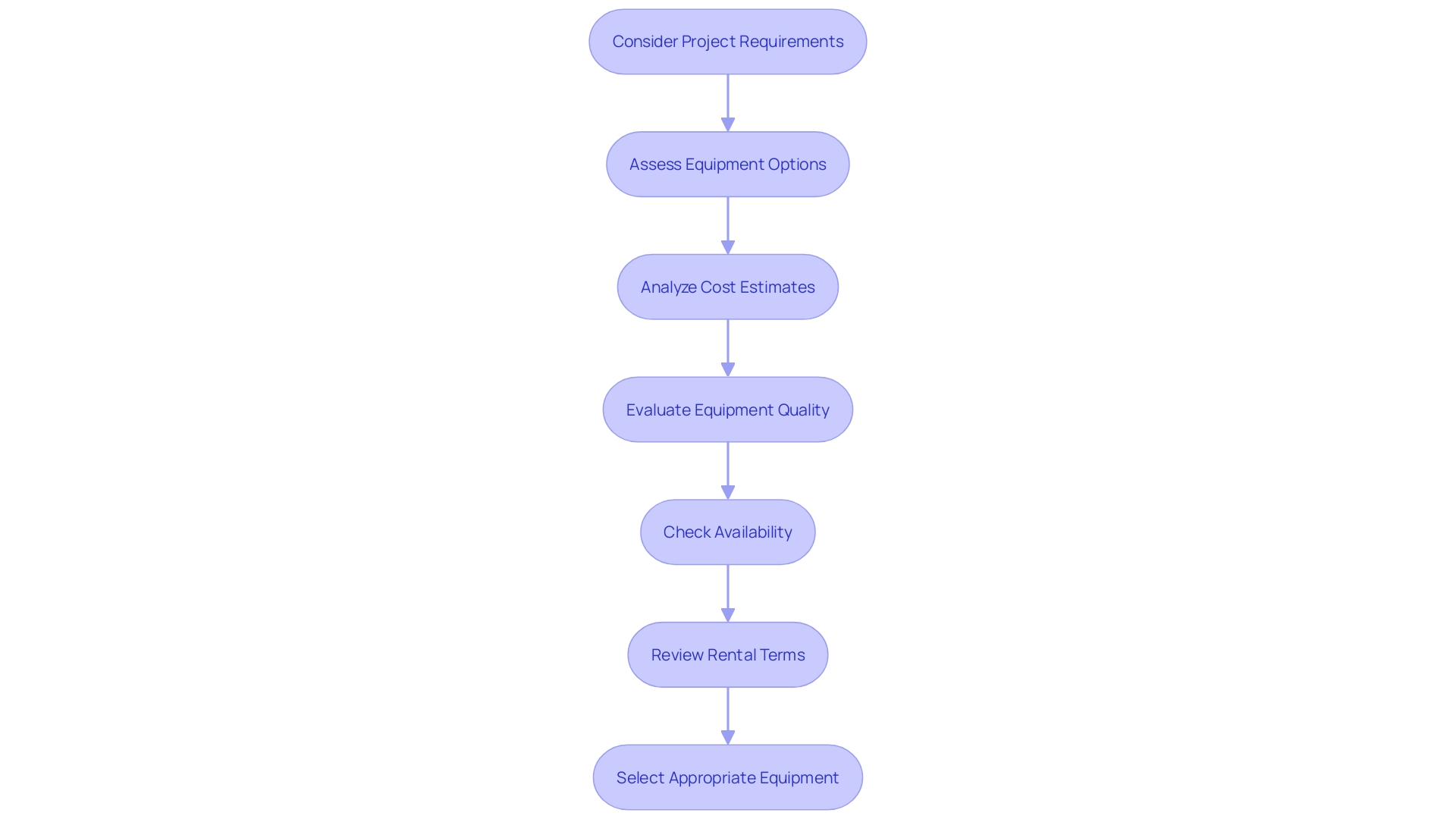
Load Capacity
When choosing a lifting device for your storage facility tasks, it's essential to take into account the weight capacity that matches the loads you regularly handle. A lifting device with a sufficient load capacity is not only a question of effectiveness; it is a basic safety necessity. Inadequately assessed equipment can lead to overloading incidents, which not only jeopardize the safety of your workforce but can also incur costly damages and delays. Seek motivation from Europris, the prominent discount chain in Norway, that, in its quest for a computerized central storage facility, established a logistics center with a substantial capability for item storage and innovative material handling equipment. This strategic move not only optimized their operations but also ensured that the equipment used could safely handle the intended loads. Considering this, when selecting a lifting device, ensure that it is strong enough to handle the usual weights in your storage facility, thus reducing the chance of incidents and guaranteeing an efficient workflow.
Fork Length and Width
Choosing the appropriate lifting device is essential for the effectiveness and security of material movement in a storage facility. To guarantee suitability with the platforms you often utilize, assess their measurements and select a lifting device with fork lengths and widths that can conveniently accommodate them. This attention to detail will prevent mishandling and potential product damage, contributing to a safer and more streamlined operation akin to the automated solutions implemented by Europris in Norway. Similarly, incorporating safety features, inspired by the innovative approach of Jungheinrich's forklifts, like visual warning systems can further enhance operational safety, particularly in busy warehouse environments.
Electric or Manual
When choosing a lifting device for your operations, it's important to consider the advantages and disadvantages between electric and manual alternatives. Electric material handlers are notable for their capacity to handle heavier loads effortlessly, thereby reducing the physical strain on workers. They play a crucial role in environments like Europris's automated central facility in Moss, where efficiency and handling large volumes are paramount. With the warehouse boasting 65,000 locations for pallet storage and 11 Vectura cranes for handling goods, the electric jacks complement the automated systems by ensuring smooth and consistent movement of items.
On the other hand, manual lifting devices provide a more cost-effective option for lighter shipments and can be highly efficient in smaller businesses. As sustainability becomes increasingly important, electric material handlers also provide an environmentally friendly option, echoing the sentiments from Volvo regarding the push for fossil-free construction sites. They eliminate emissions within indoor spaces, safeguarding the health of operators and aligning with stricter environmental standards.
Considering the broader implications, laser-guided vehicles (LGVs) exemplify the shift towards more sustainable and efficient material handling. They provide benefits such as decreased manpower needs and decreased operating expenses, resonating with the advantages offered by electric devices for moving goods. In comparison, traditional forklifts can incur demurrage costs and present safety risks—issues that are mitigated with the adoption of electric handling solutions.
Ultimately, the decision between electric and manual pallet jacks should be informed by your specific operational needs, environmental considerations, and the potential for enhancing efficiency while lowering costs, as demonstrated by successful applications in various manufacturing and distribution facilities.
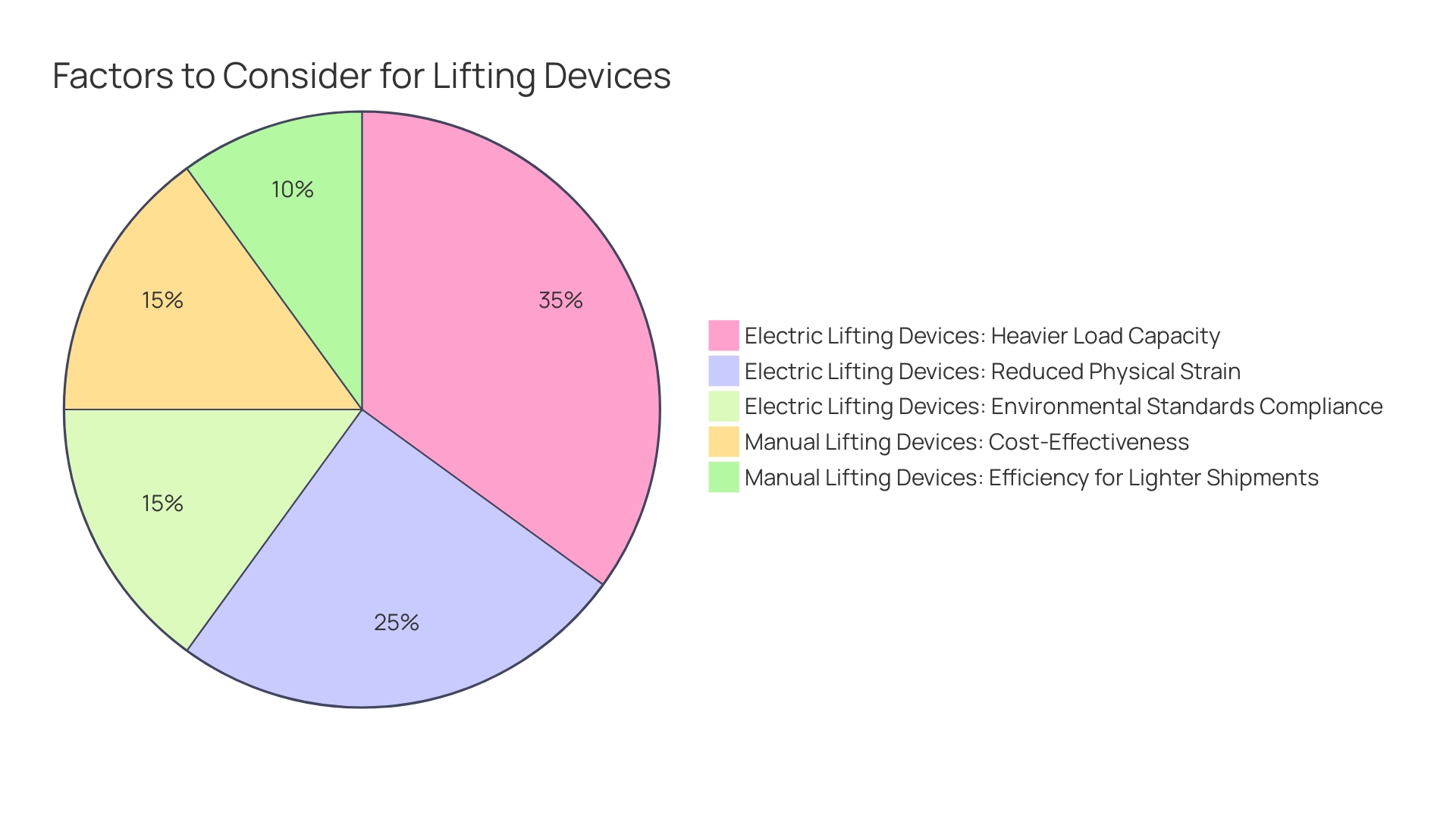
Rental Terms and Conditions
When choosing construction equipment leases, it is essential to fully comprehend the terms and conditions of the agreement. This includes being clear on the pricing structure, duration, and being aware of any potential additional fees or charges that could arise. It's important to ensure the agreement is tailored to meet the specific needs of your project and adheres to your budget constraints.
For instance, taking into account the business model of companies that provide equipment for temporary use, such as the case of URI, can offer valuable insights. URI's approach demonstrates the fiscal dynamics at play in the equipment leasing sector. They lease heavy equipment, typically recovering approximately 50% of the machine's original purchase price annually, over an average lifespan of seven years. As the equipment ages, both rates and the machine's value decrease, necessitating strategic decisions regarding the optimal time to sell, often recouping 30% or more of the original purchase price by selling into developing markets.
When negotiating your terms, it's beneficial to draw from this understanding of equipment valuation over time. Make sure that your agreement permits flexibility, taking into account the long-term economics of renting, which could aid in optimizing your project's budget management.
Additionally, keep abreast of the latest industry developments, such as those reported by Data Center Knowledge, which can affect equipment costs and availability. For instance, emerging technologies like AI are influencing semiconductor demand, and companies like HPE are expanding their market presence through acquisitions. These factors can spread to impact the scalability and cost of construction equipment leases.
Lastly, always remember the wise words of the Complaints Committee for the purchase of goods and services, which emphasize the importance of fair dealings in contractual agreements. As they suggest, it is reasonable for renters to expect that they will not bear costs for pre-existing conditions of the equipment. This emphasizes the significance of a clear and equitable lease agreement that safeguards both the leasing firm and you, the lessee, from unexpected financial losses.
Customer Reviews and Reputation
Choosing a reliable company is crucial for the success of your construction project. Look for a provider with commendable customer service and a proven track record, confirmed by positive testimonials from previous clients. One testimonial praises the seamless process and helpful staff, stating, "I had a great experience from beginning to end!" This echoes the significance of a company's support throughout the period of renting. Furthermore, considering the swift growth of the equipment leasing sector, the market has become immensely competitive, underscoring the importance for leasing companies to uphold elevated benchmarks to distinguish themselves. Statistics also disclose that consumer disputes can occur with leases, emphasizing the need for dependable equipment and clear policies. A reputable company that specializes in providing goods for temporary use often offers warranties or buy-back policies, adding an extra layer of security for the customer. Therefore, when selecting your rental provider, ensure they demonstrate a strong commitment to customer satisfaction, robust maintenance of equipment, and clearly stated policies to handle any issues that may arise, as these factors are essential in delivering cost-effective, efficient solutions for your projects.
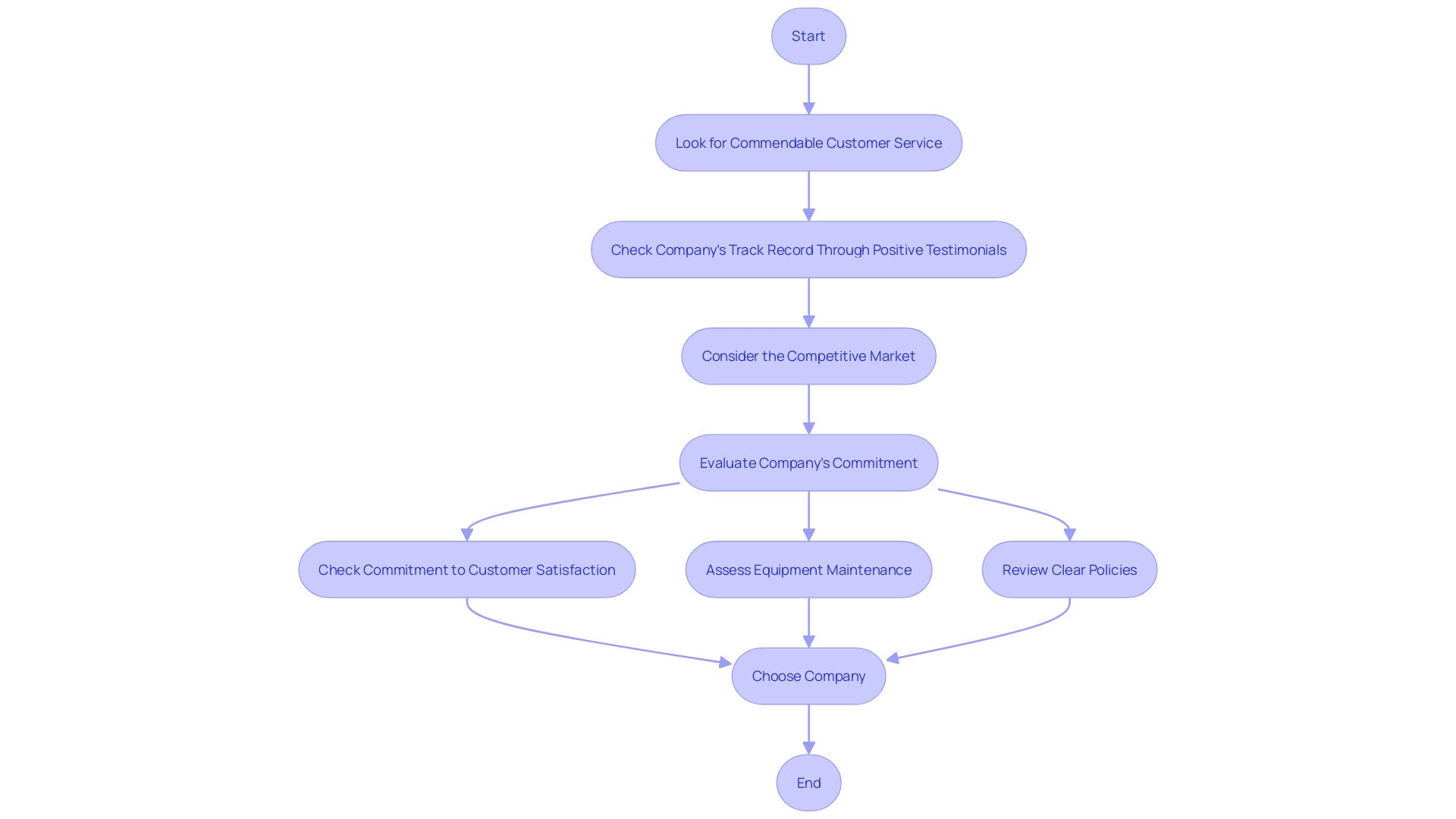
Conclusion
In conclusion, renting pallet jacks offers a cost-effective and flexible solution for warehouse operations. It frees up capital, provides access to the latest models, and includes maintenance and repair services. Renting pallet jacks allows warehouses to optimize storage space, adapt to changing demands, and enhance operational agility.
When choosing a rental, it's important to consider load capacity, fork length and width, and electric or manual options. Understanding rental terms and selecting a reputable company are crucial. By renting pallet jacks, warehouses can maintain productivity, ensure a positive customer experience, and streamline the movement of goods within the facility.
Rent pallet jacks from EZ Equipment Rental today and optimize your warehouse operations!




